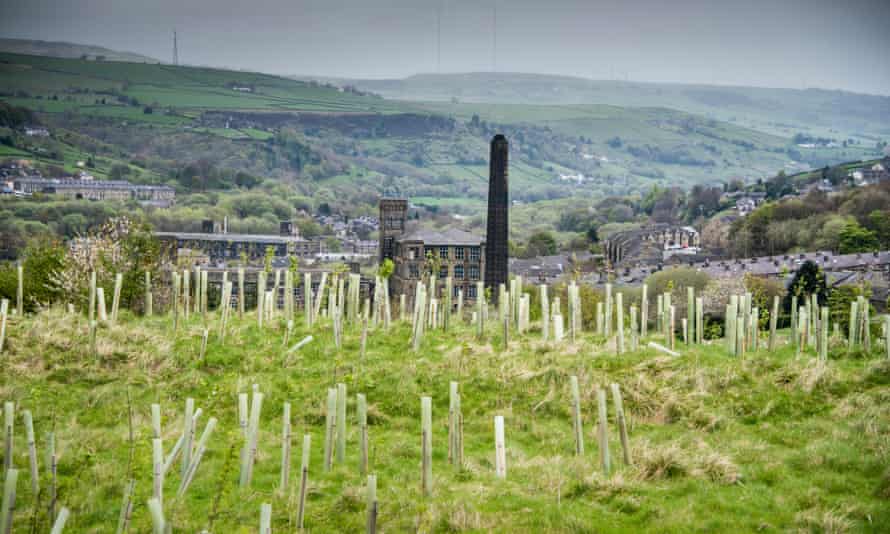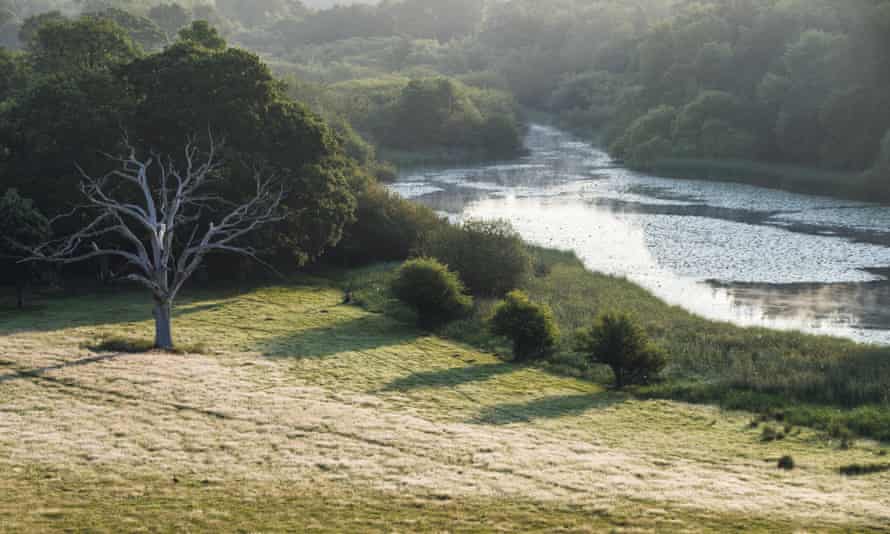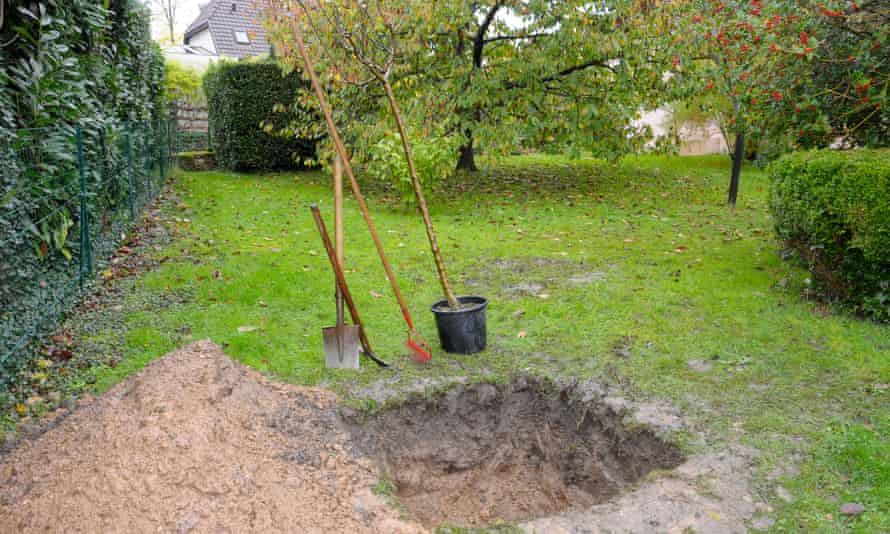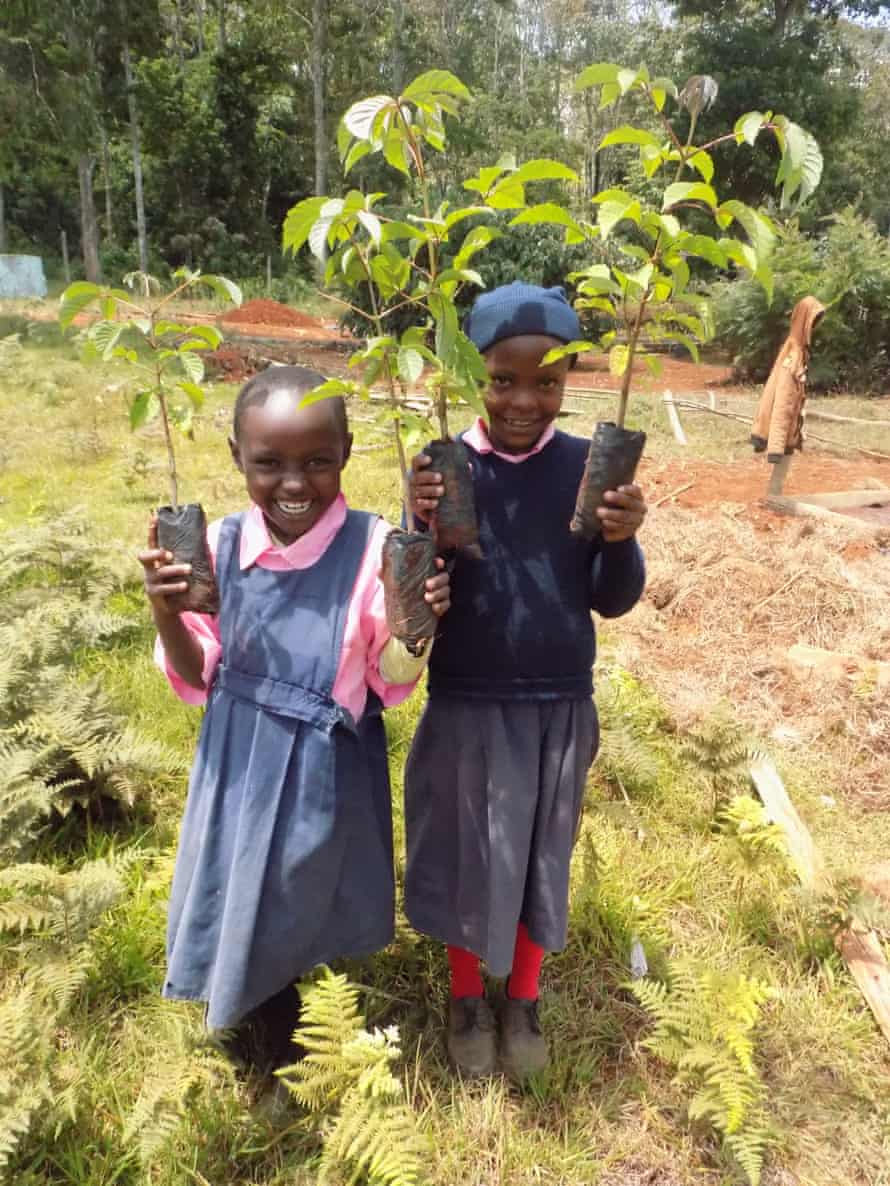Spon's Estimating Costs Guide To Small Groundworks, Landscaping And Gardening
'T ree planting 'has mind-blowing potential' to tackle climate crisis." That's how the Guardian reported findings from the Crowther Lab in Switzerland two months ago. Billions more trees, scientists claimed, could remove two-thirds of all the carbon dioxide created by human activity. Forest restoration "isn't just one of our climate change solutions, it is overwhelmingly the top one," said the lead scientist, climate change ecologist Tom Crowther.
Such a programme might take 100 years to be fully effective, but along the way it would reduce the consequences of the climate crisis – protecting soil from erosion, reducing the risk of flooding and providing habitats for a vast range of animals and other plant species.
Some baby steps are already being taken, such as the Bonn Challenge, a global attempt to reforest 350m hectares by 2030. In the UK, tree-planting initiatives include the Northern Forest, which will be made up of 25m trees, spanning the north of England from Liverpool to Hull.
But we need to do much, much more. Another study led by Crowther, published in Nature in 2015, estimated that while there are more than 3 trillion trees in the world, that number had fallen by 46% since the dawn of human civilisation.
In Brazil, the Amazon rainforest continues to shrink by the equivalent of three football fields every minute as land is turned over to cattle ranching, soya-bean production and mining. In August alone, an area the size of Hong Kong disappeared, not including losses from fires.
If you want to do your bit, here are some answers to the big questions.
How many trees should we be planting?

In its recent report Net Zero: the UK's contribution to stopping global warming, the Committee on Climate Change says the UK needs to increase its woodland from 13% of land area to 17% (the European average is around 35%). We need to be planting 30,000 hectares annually. "In the 2018-19 season, we did just under 13,000 hectares, of which 11,000 were in Scotland," says John Tucker, director of woodland outreach at the Woodland Trust. "If you looked at England, we probably need six times more tree-planting. We are way off where we should be."
In order to hit the target, says Jon Stokes, director of trees, science and research at the Tree Council, "we need a radically different approach in terms of funding, incentives, land availability, harnessing people power and private-public involvement. Existing woodlands are also valuable habitats and an essential source of carbon capture, however they are not always managed effectively. Improving the management of existing woodlands could maximise their ability to store and capture carbon, and should therefore be a key part of any plan to increase tree numbers or canopy cover."
Can people planting trees in their garden make much of a dent? "One individual tree might not make a difference but if 10m people put one tree in, that would," says Tucker. "If people feel they want to do something, then planting a tree in the right place is a good thing to do … Get trees that are produced from seed that is sourced from the UK and grown in the UK. We want to avoid encouraging people to buy trees that have been imported because that brings with it a risk of disease."
What should we be planting, and where?

It isn't simply a case of filling every available space with trees. Species need to be chosen carefully to ensure they grow well – especially on deforested or degraded land – and fit into the existing ecosystem. "There are other landscapes – such as grasslands and peatlands – which are rich in biodiversity and can also lock up lots of carbon dioxide in their own right. These must be protected and here it might not be appropriate to plant trees," says Stokes.
Isabella Tree, author of Wilding, who, with her husband Charles Burrell, turned a 1,400-hectare farm in West Sussex into one of the country's biggest "rewilding" projects, is not in favour of plantations. "The advantages of natural regeneration are absolutely huge and haven't really been taken seriously," she claims. Creating forest plantations, she says, would require first spraying the area with a weedkiller, such as glyphosate. "Then you're transporting people in by car, with saplings that have been grown in nurseries in an artificial high-carbon system. They may have been imported, so you've got a disease risk there. They also won't have all the mycorrhizas [beneficial fungi] that they would have had if they were grown in the wild. It's a human choice what tree is planted where, and we're not always the best judge of that."
Saplings are usually protected with a plastic tube that doesn't biodegrade, and also creates "a micro-environment that can encourage a buildup of condensation, so those saplings are often prone to rot and disease buildup. They also encourage the saplings to grow fast and tall, so they are etiolated stems. That may be fine if you're a forester and you want to grow trees with great tall trunks, but not if you want to get a natural landscape back."
The alternative is to let nature do it. "You allow thorny scrub to grow up, and that happens with birds and wind dispersing seed across your landscape – it's one of the most biodiverse habitats there is, but in the UK we have zero tolerance for it." A single jay, for instance, can plant thousands of acorns in a month, she says. "That thorny scrub becomes essentially nature's barbed wire, to protect that sapling as it grows, so deer and rabbits can't get at it. The sapling is instantly plugged into all the fungi associates of the scrub and the trees around it, so it's like getting an intravenous injection of nutrients and minerals from the get-go. That tree will be much healthier and much more resilient than a tree that has been artificially planted. At the end, what you'll get is an open woodscape, with lateral branches, which is a huge habitat for birds and bats, and a scrubby landscape where you've got the next generation of trees coming up. It sequesters carbon in a much more dynamic way than a closed-canopy, single-generational plantation."
One of the obstacles, she says, is funding. It is simple to request funds for, say, 500 oaks in a certain area. It is less easy to say we want to allow trees to regenerate naturally, but can't say how many that will be. "The funding paradigm doesn't fit natural regeneration – and that's one of the big problems."
Can we just plant trees in our gardens?

You don't need permission, but you do need to think about what species will grow where you live, and also how big it could get. "It's no use planting an oak tree two feet outside your back door – it will damage your house," says Tucker. "You need to think about house foundations, underground drains, overhead power lines and make sure the tree is going to be in a place where it can grow and not have any adverse impact." Think about the effect on your neighbours, too. Smaller species include apple trees or rowan.
"The act of planting must not be seen as the end of this process," Stokes adds. "Aftercare is absolutely vital for young and newly planted trees; without aftercare, we could plant many trees that simply die or don't grow to a size where they can provide benefits such as capturing carbon."
What if we don't have gardens? Can we plant trees anywhere?
You can't plant on waste ground or in your local park without permission from the landowner – that could well be the local council and, says Tucker: "They might be interested in people approaching them and asking them if they can plant trees on their land." Other good places to try may be school or hospital grounds.
If you're planting more than two hectares of forest (less if it's a "sensitive area"), you may need to contact your local Forestry Commission office "about whether you need what is, in effect, planning permission to create a new woodland". There may also be funding available.
Should we be focusing on the city or the countryside?
"We need more trees everywhere, but they perform different functions," says Tucker. Leaving aside carbon sequestration, "In the rural situation, soil erosion is a real problem and trees in the right place, because their roots help improve water infiltration, can reduce runoff. In our cities, trees can be really good for improving air quality. As the climate warms up, shading in our towns and cities is going to become increasingly important and trees can perform that role. Surface-water flooding is a big problem in cities now and trees can help alleviate some of those flash-flooding episodes."
"Not many of the recent planting grants have been for urban trees, so it's great to see the Urban Tree Challenge Fund promising to plant 130,000 new urban trees," adds Stokes.
How else can we help?

The Tree Council has a national network of volunteers called tree wardens, who help conserve trees in their community. There may also be local tree-planting groups. If there aren't, you could set up your own (the Woodland Trust offers free planting packs for community groups). Trees for Cities is another organisation that runs tree-planting projects. Donate money or volunteer.
There are numerous reforestation charities operating around the world, such as the International Tree Foundation, and TreeSisters, which plants 2.2m trees across the tropics, including in India, Kenya and Brazil, every year.
Beyond that, support international organisations that promote the rights of indigenous people, whose land stores nearly a quarter of the carbon stored in tropical forests, and who are best placed to protect forested areas by monitor and report illegal logging. In the UK, lobby the government to take reforestation seriously. "Tree planting rates in the UK in the past probably eight years have been the lowest for a generation, so we are miles off where we should be," says Tucker.
"Stopping deforestation is really important, because about 10% of carbon dioxide emissions come from deforestation," adds Dominick Spracklen, professor of biosphere-atmosphere interactions at the University of Leeds.
Many products we wouldn't even think of contribute to the problem. "Ask questions," says Stephen Donofrio, from the organisation Forest Trends. Ask the supermarkets where the palm oil in their products comes from, or the soya feed used to farm their meat. Ask sportswear companies where the leather in their trainers was sourced. Ask the person responsible for your pension fund how much deforestation its investments are causing. "Even if that person doesn't know the answer, you've asked the question and hopefully others will, too, to the point where this comes on to their radar."
Simon Lewis, professor of global change science at University College London, says we should "support the rewilding forest restoration schemes. Lobby companies – and to get legislation – so that the food production chain is deforestation-free. On a personal level, reducing your meat and dairy consumption will take pressure off the land to allow the possibility of having more forest."
Above all, we mustn't get complacent. "There are people who think we can keep using fossil fuels, and plant a few trees, and it's all going to be all right," says Spracklen. "That's not going to solve climate change on its own."
Spon's Estimating Costs Guide To Small Groundworks, Landscaping And Gardening
Source: https://www.theguardian.com/environment/2019/sep/04/grow-your-own-forest-how-to-plant-trees-to-help-save-the-planet
Posted by: millerpithenclacke.blogspot.com

0 Response to "Spon's Estimating Costs Guide To Small Groundworks, Landscaping And Gardening"
Post a Comment